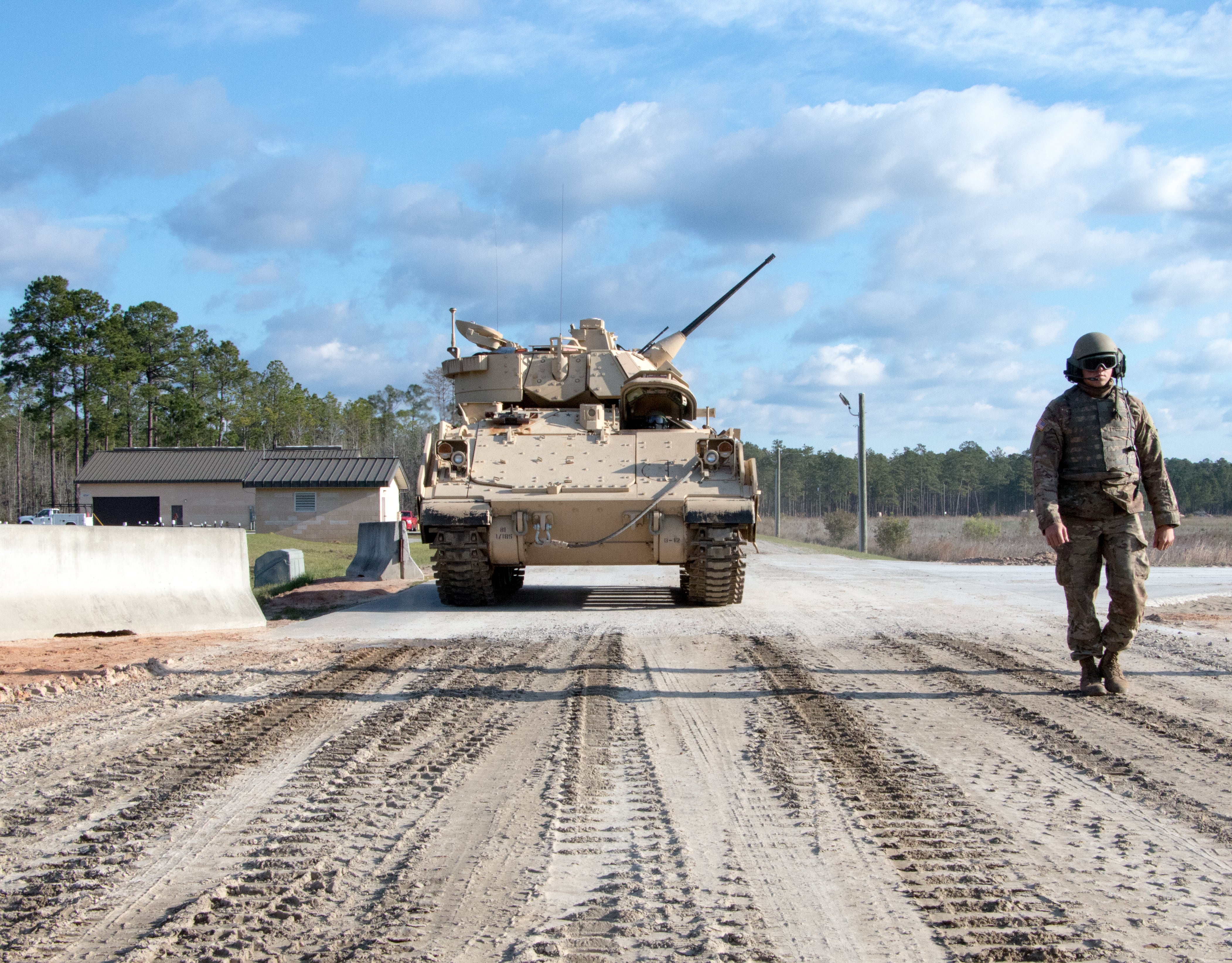WASHINGTON — The Army is backing off a plan for the service to submit its own bid to the Bradley Infantry Fighting Vehicle replacement competition after it indicated its intention to offer up its own design in a draft request for proposals posted in July.
The service tried once before to competitively solicit designs for its Optionally Manned Fighting Vehicle (OMFV) but ended up with just one offering after its requirements proved too onerous to industry and included a requirement to deliver a working prototype to the Army by October 2019.
In a statement sent to Defense News Sept. 17 from Ashley John, an Army spokeswoman, she said “As a result of industry feedback and continuous dialogue between Army senior leaders, the government will not submit a proposal in response to the OMFV RFP. A revision to the draft OMFV RFP was made today and deletes paragraph A.3.1 Interested Government Offeror in its entirety."
The Army’s intention to develop its own bid was met with scrutiny as industry officials questioned whether the service could play the game after service leaders had already seen industry’s cards during an earlier iteration of the competition. The move, many in industry thought, would have easily teed up protests.
With pressure to get the competitive process right this time in a program where the service plans to spend $4.6 billion from fiscal 2022 through FY26, it is turning to industry input earlier and more than ever.
Congress questioned Army leaders earlier this year on why it seemed the service did not pay attention to the signs or listen to industry and make adjustments before having to cancel its previous competition. First, BAE Systems, which manufactures the Bradley, decided not to compete due to unachievable requirements set within a very short timeline. Then the Army had to disqualify a Raytheon and Rheinmetall team because they couldn’t get a physical bid sample to Aberdeen Proving Ground, Maryland, in time.
The service, this time around, reviewed and analyzed over 500 industry comments in response to the draft RFP and will now spend several weeks providing responses to industry concerns, John said.
“As we continue to progress through the first-phase of our five-phased approach for the OMFV program, communication, inclusive feedback and innovative thinking from industry remains key,” John said.
RELATED

The Army waded back into the OMFV effort with the release of a market survey in February that tapped industry for ideas on what a future vehicle might look like. The market survey itself asked companies to weigh in on what affected their decisions to participate in the previous OMFV competitive effort and how the Army might better engage with industry this time around.
Instead of providing a laundry list of requirements that when paired together became unachievable — especially when delivered over an ambitious fielding goal of 2026 — the Army will give industry roughly nine characteristics with which to work. The Army is also not requiring the delivery of physical bid samples in the first phase of competition.
The Army plans to release a final RFP in December, which will results in the award of up to five contracts in June 2021.
It appears likely that the Raytheon and Rheinmetall team and General Dynamics Land Systems will submit bids for the new competition. BAE Systems has not publicly said whether they plan to compete this time.
Jen Judson is an award-winning journalist covering land warfare for Defense News. She has also worked for Politico and Inside Defense. She holds a Master of Science degree in journalism from Boston University and a Bachelor of Arts degree from Kenyon College.








